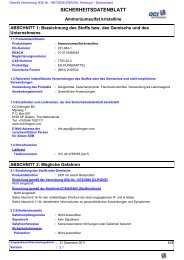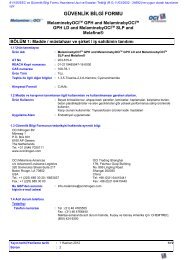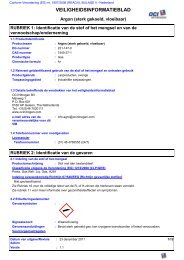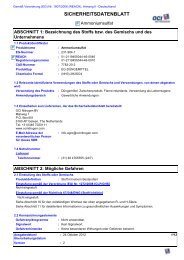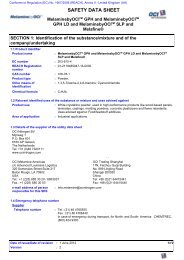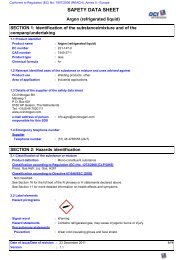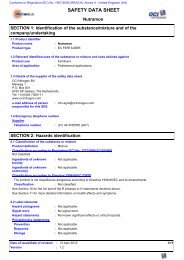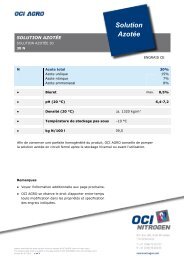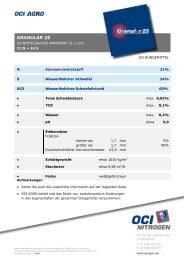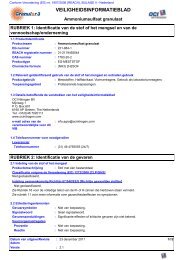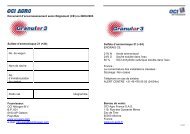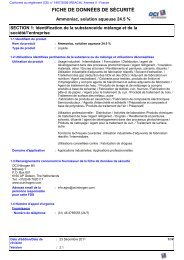PRODUCTION OF AMMONIA - OCI Nitrogen
PRODUCTION OF AMMONIA - OCI Nitrogen
PRODUCTION OF AMMONIA - OCI Nitrogen
You also want an ePaper? Increase the reach of your titles
YUMPU automatically turns print PDFs into web optimized ePapers that Google loves.
4.1.4 Solvents and additives<br />
The consumption of solvent in the CO 2 removal unit should not normally exceed<br />
0.02-0.04kg.t -1 NH 3 , or about 2kg.h -1 for a BAT capacity plant. Solvent losses are mainly<br />
caused by leaks.<br />
The usual treatment additives and regeneration agents are used in the boiler feedwater<br />
preparation units. The consumption figures should not differ from those of a standard steam<br />
boiler plant at the same location.<br />
4.1.5 Catalysts<br />
Approximate consumption figures, based on average filling volumes and normally recommended<br />
operating periods, for a gas based conventional reforming plant, are given in the table<br />
below. The consumptions refer to a capacity of 1,500t.d -1 .<br />
Actual consumptions in existing plants may differ considerably from the guidance figures<br />
above.<br />
4.1.6 Energy requirements<br />
The total energy requirement in the reforming BAT processes is 28.8-31.5GJ (LHV).t -1 NH 3<br />
for a stand-alone plant with no energy export and no other import than feedstock and fuel.<br />
When using process waste heat in a gas heated reformer, the process itself will not produce<br />
enough steam to drive all the compressors. A part of the power needed may then be imported<br />
from a more efficient power plant outside the process plant. In such cases the total<br />
energy consumption may be lowered and approach the present practical minimum of<br />
27 GJ(LHV).t -1 NH 3 .<br />
In partial oxidation plants the total energy requirement is 36.9(35.1-37.8)GJ(LHV).t -1 NH 3 .<br />
This includes imported power and/or auxiliary steam for driving the machinery.<br />
4.2 Production Output<br />
4.2.1 Ammonia<br />
Ammonia production in the typical size BAT plant is 1,000-1,500t.d -1 (300,000-500,000t.y -1 ).<br />
The production not used in downstream plants on site is stored as described in Chapter 3.<br />
22<br />
Catalyst type Typical replacement,<br />
m 3 .y -1<br />
Hydrodesulphurisation 1<br />
Sulphur removal 5<br />
Primary 5<br />
Secondary reforming 4<br />
High temperature shift 10<br />
Low temperature shift 20<br />
Methanation 2<br />
Synthesis 10



